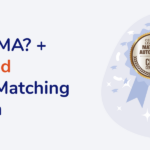Understanding Nonprofit Cloud’s Data Model: The Basics
Nonprofit Cloud offers several modules designed to manage different areas of your organization’s operations, engage supporters, and drive efficiency.
As Fíonta explains, Nonprofit Cloud brings additional platform interoperability to the already robust suite of Salesforce solutions for nonprofits. Specifically, nonprofits can expand the power of Nonprofit Cloud by leveraging other industry clouds, common components shared across industries, and third-party applications available on the AppExchange.
Understanding and learning to use such a comprehensive tool can take time. However, knowledge about its features and inner workings can help nonprofits take full advantage of this solution. In this guide, we’ll explore Nonprofit Cloud’s data model basics and answer a few common questions. Let’s begin.
What is a data model in Salesforce?
A data model refers to the way data is organized or structured within a database. The goal of any data model is to make data consistent and easy to understand by defining rules and relationships between different types of data.
Salesforce models data differently depending on factors like industry. Additionally, each Nonprofit Cloud module leverages a different data model, from fundraising to grantmaking.
The basic building blocks of Salesforce data models are:
- Objects: These represent tables that store details about a related set of information. They function as containers for information. For example, an Account object would contain fields and records with more information about that account.
- Standard objects: These are pre-built objects included within Salesforce. Common examples include Accounts, Contacts, Cases, and Opportunities. These objects typically have a default set of fields, making them easy to use out of the box.
- Custom objects: Create your own objects to store information unique to your industry or organization. For example, your organization might create a custom object for tracking volunteer hours with fields like volunteer name, date of service, and hours worked.
- Fields: These are labeled data elements that are stored within an object. For Case objects, the fields may include name, intake date, needs, sessions attended, and more.
- Records: Records are the individual pieces of data that populate the fields. In the Case object example, the individual’s record would include their name, the date they made contact with your organization, their needs, and the sessions they’ve attended.
Understanding how the Nonprofit Cloud data model functions allows organizations to store, organize, and access data more efficiently. Additionally, knowledge of data model building blocks empowers users to create customized solutions to track unique aspects of their work, from program progress to marketing campaigns.
Nonprofit Cloud Data Model FAQs
What makes it different?
As mentioned, each Nonprofit Cloud module structures data differently to account for varying departmental needs and requirements. For example, the case management and fundraising modules each have distinct data models. Make sure to familiarize yourself with your system’s data model, which standard objects it uses, objects associated with your system, and custom objects your organization currently uses or will need to create.
Here is a brief roundup of some of the unique objects included in the main modules:
- Fundraising: This module uses objects and fields to manage information about supporters, campaigns, and donations, helping nonprofits engage donors through data-driven strategies. Track basic fundraising data and progress with objects like Gift Entry, Gift Transaction, and Gift Designation. The Gift Batch object allows staff to enter gifts in bulk, and your team can indicate whether the donation is a recurring gift, a pledged or planned gift, or a grant using the Gift Commitment object.
- Program and case management: These solutions help organizations manage information about programs, benefits, and individual cases. Programs can be managed using objects like Program Enrollment, Program Cohorts, Benefit Disbursement, and more. Case data can be organized with objects like Interaction Summary, Referrals, and Case Participant. Combined, the Program & Case Management module also offers a variety of care planning objects.
- Grantmaking: Manage information about grants offered, applications, and budgets associated with each grant. These objects are sorted into people, applications, and budget management categories. Keep data organized throughout the grant lifecycle with objects like Individual Application Participant, Application Decision, Budget, Funding Disbursement, and Funding Award Requirement.
These are just a few of the objects included within each module. Explore this Salesforce resource to understand how objects interact with one another. Additionally, reference Salesforce seasonal releases to identify new objects that could address a niche nonprofit need.
How can your nonprofit get the most out of its data model?
In addition to properly funneling data from multiple sources like your website and third-party tools into your CRM, securely storing and organizing data is key to accurate insights. Data models play a critical role in the latter.
To ensure your organization is maximizing efficiency with its Nonprofit Cloud data model, consider the following:
- Use standard and included objects when possible. Standard objects and objects included in Nonprofit Cloud are designed to be compatible with other Salesforce tools, updates, and more. Try to use custom objects sparingly to limit unnecessary complexity that could impact your data model’s performance.
- Understand and establish relationships. Relationships are the connections between data objects. This way, users can also see related data when they view records. Similar to objects, your organization can create custom relationships if needed.
- Consider implementing validation rules. Validation rules verify that data entered into a field meets set criteria before the record can be saved. These rules ensure data quality by automatically enforcing data entry standards that block the entry of incorrect or incomplete data.
Remember to train staff to properly input, access, and analyze data. If your nonprofit is implementing Nonprofit Cloud, this will not only encourage widespread adoption but also keep data standardized and accurate. High proficiency with the system can also encourage more cross-team collaboration, creativity, and innovation.
How does it impact interoperability?
Nonprofit Cloud is an Industry Cloud, meaning that it’s built on the common core Industry Data Model and can seamlessly use objects and components from other industry clouds.
Additionally, your organization can leverage other Salesforce tools, like Marketing Cloud Account Engagement (MCAE), to further extend Nonprofit Cloud’s capabilities. This underlying, built-in compatibility makes Nonprofit Cloud a powerful, flexible tool that can scale with your nonprofit’s growth.
Data models can seem confusing at first glance, especially if you aren’t a developer or tech expert. However, gaining a basic understanding of them can significantly improve your nonprofit’s data management processes, yielding higher-quality results. To get help managing or optimizing your data model or Salesforce instance, consider working with an experienced Salesforce partner.


